Panamanian opposition politicians have accused the US of launching a “camouflaged invasion” of the country, amid simmering discontent over the government’s handling of the diplomatic crisis.
After a three-day visit by the US Secretary of Defense Pete Hegseth, US President Donald Trump appeared to confirm that US military personnel had been deployed to the Central American country on Thursday, telling reporters: “We’ve moved a lot of troops to Panama.”
Hegseth said that the US would increase its military presence at three former US bases in the country to “secure the Panama Canal from Chinese influence.”
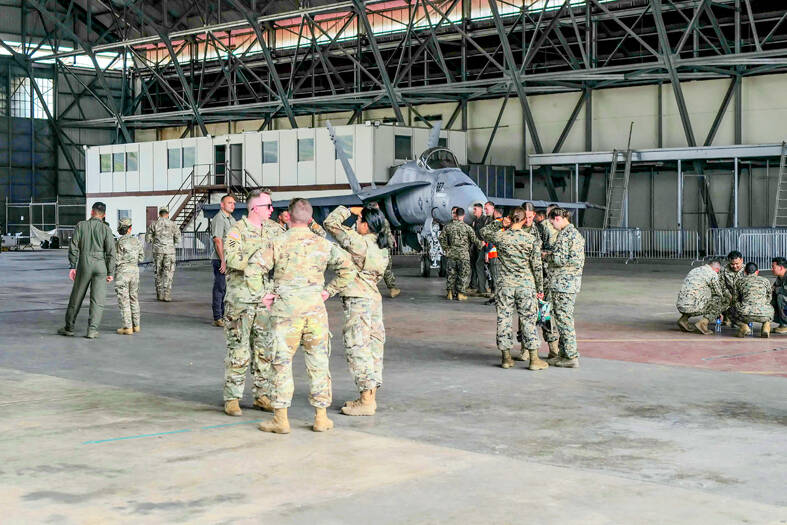
Photo: AFP
The last US military bases in Panama were vacated in 1999 as a condition of the 1977 Torrijos-Carter treaties to hand the canal to Panamanian ownership. Under the canal’s neutrality treaty, no foreign power can “maintain military forces, defense sites and military installations within its national territory.”
“This is a camouflaged invasion,” said Ricardo Lombana, the leader of the opposition Other Way Movement. “An invasion without firing a shot, but with a cudgel and threats.”
At a news conference on Wednesday to announce the signing of a memorandum of understanding (MOU) with the US, Panamanian Minister of Public Security Frank Abrego said the agreement would not impinge on his nation’s sovereignty and the country would not accept military bases.
However, a full text of the MOU included aerial photos of Fort Sherman, Rodman Naval Base and Howard Air Force Base, with areas outlined for “training,” “humanitarian activities” and the “installation of US property.”
The Panamanian government said they are not “military bases” and that the deal is temporary, but opposition parties have rejected such claims.
“If you have an installation which is for the use of foreign soldiers and they have control over what happens inside — and Panama has to ask in advance to enter — that’s a military base,” Lombana said.
For many Panamanians, the return of US armed forces — even for supposed “joint operations” — would bring back uncomfortable memories of 1989’s Operation Just Cause, when US troops killed thousands of civilians.
A second agreement allows US Navy ships to be reimbursed for the fees they pay to the canal.
That preferential treatment would appear to contravene the neutrality treatment and could open the door to further attempts to negotiate down the fees charged by the canal.
On Thursday, a local lawyer filed a legal case against the Panamanian President Jose Raul Mulino, accusing him of “crimes against the international personality of the state.”
Frustration is growing over the government’s handling of the diplomatic crisis. Since Trump declared his plan to “take back” the Panama Canal in his Jan. 20 inauguration speech, all communication on the topic has been through Mulino and the details of negotiations kept largely secret.
This has led to serious differences in the US and Panamanian accounts of those negotiations.
US Secretary of State Marco Rubio visited in early February, Mulino told reporters that the meeting had been “very cordial” and that the canal was not under threat.
However, Rubio said the situation around the canal was “unacceptable” and Trump continued to call for the return of the canal.
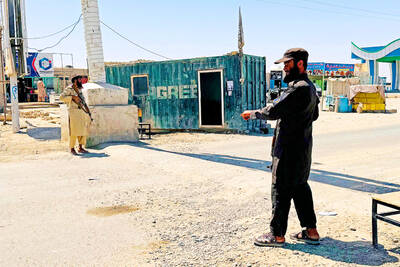
‘EYE FOR AN EYE’: Two of the men were shot by a male relative of the victims, whose families turned down the opportunity to offer them amnesty, the Supreme Court said Four men were yesterday publicly executed in Afghanistan, the Supreme Court said, the highest number of executions to be carried out in one day since the Taliban’s return to power. The executions in three separate provinces brought to 10 the number of men publicly put to death since 2021, according to an Agence France-Presse tally. Public executions were common during the Taliban’s first rule from 1996 to 2001, with most of them carried out publicly in sports stadiums. Two men were shot around six or seven times by a male relative of the victims in front of spectators in Qala-i-Naw, the center
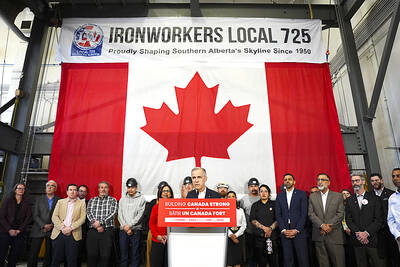
Canadian Prime Minister Mark Carney is leaning into his banking background as his country fights a trade war with the US, but his financial ties have also made him a target for conspiracy theories. Incorporating tropes familiar to followers of the far-right QAnon movement, conspiratorial social media posts about the Liberal leader have surged ahead of the country’s April 28 election. Posts range from false claims he recited a “satanic chant” at a campaign event to artificial intelligence (AI)-generated images of him in a pool with convicted sex offender Jeffrey Epstein. “He’s the ideal person to be targeted here, for sure, due to
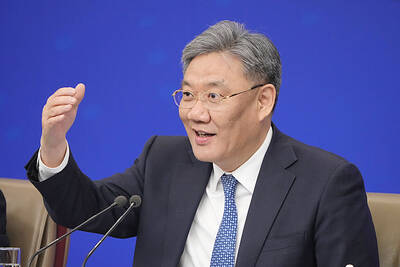
DISPUTE: Beijing seeks global support against Trump’s tariffs, but many governments remain hesitant to align, including India, ASEAN countries and Australia China is reaching out to other nations as the US layers on more tariffs, in what appears to be an attempt by Beijing to form a united front to compel Washington to retreat. Days into the effort, it is meeting only partial success from countries unwilling to ally with the main target of US President Donald Trump’s trade war. Facing the cratering of global markets, Trump on Wednesday backed off his tariffs on most nations for 90 days, saying countries were lining up to negotiate more favorable conditions. China has refused to seek talks, saying the US was insincere and that it
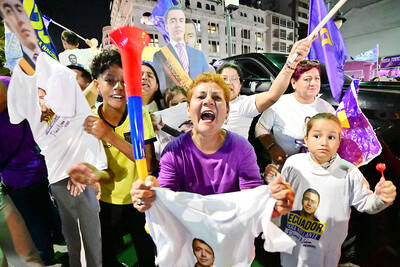
Incumbent Ecuadoran President Daniel Noboa on Sunday claimed a runaway victory in the nation’s presidential election, after voters endorsed the young leader’s “iron fist” approach to rampant cartel violence. With more than 90 percent of the votes counted, the National Election Council said Noboa had an unassailable 12-point lead over his leftist rival Luisa Gonzalez. Official results showed Noboa with 56 percent of the vote, against Gonzalez’s 44 percent — a far bigger winning margin than expected after a virtual tie in the first round. Speaking to jubilant supporters in his hometown of Olon, the 37-year-old president claimed a “historic victory.” “A huge hug